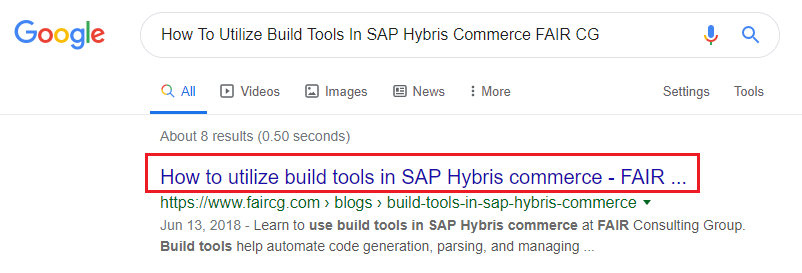SEO Blogs and Articles are a very important part of Social Media Management. When we write content for our blog or website, Google notices our effort. SEO refers to search engine optimization that is the process of optimizing a website so that people can find it via search engines like Google. In short, we can say that SEO is any content that we create with the goal of attracting search engine traffic. To accomplish this goal, we need to offer value above and beyond search engine optimization. So, let’s discuss a few rules and strategies to write down the search engine optimized content.
SEO Title
Your SEO Title is the first thing people see on the SERP (Search Engine Results Page) as the title of your snippet. The SEO title should consist of 50 – 60 characters so that it appears completely and adjusts in one line.
Search Engine Optimized Content
To optimize the blogs, pages and articles for the search engines, we need to follow these important steps.
Keyword Research:
It can be hard to find out the right keywords. But now we have many online keywords research tools that can be used to search for the valuable keywords for our content. These are some of the useful tools freely available on the internet.
- Google Keywords Planner
- Keywordtool.io
- Ubersuggest
- Soovle
- Ahrefs Keywords Explorer
- Moz Keyword Explorer
- Keywords Everywhere
- Google Trends
- SEMRush
- KWFinder
Keywords Density:
Keywords density is how many times you have used the keywords in your text. It can be calculated through the following formula,
Keywords Density = No. of Keywords used / No. of Words in the article x 100
Usually, 1.2% – 2.5% keywords density will be okay. Do not do keyword stuffing.
This is how Yoast SEO checks the keywords density.
Composing Sentences:
These are a few basic rules to write a search engine optimized content.
- Try to make shorter sentences using less difficult words to improve readability. Try not to use more than 20 words in a sentence.
- Not more than 10% of sentences should contain passive voice.
- Avoid starting more than 2 consecutive sentences with the same word.
- Keep the length of your paragraphs below 150 words.
- Use Keyword in the first paragraph of your article/blog.
- At Least 30% of sentences should contain transition words.
- Add some internal and outbound links in the text.
- There must be more than 350 words in each blog post/article/page.
Transition Words:
Transition words are used to link words, phrases or sentences. These transition words can be used while writing a search engine optimized content.
| Therefore | as a result | so |
| consequently | That is to say | in other words |
| to clarify | but | however |
| on the other hand | for example | for instance |
| above all | most importantly | certainly |
| Firstly / secondly | further | and |
| moreover | in addition | meanwhile |
| during | subsequently | after that |
| likewise | similarly | in the same vein |
| In conclusion | to sum up | in short |
Using Headings:
Headings help users and search engines to read and understand the text. Here are a few ways, how to use headers to improve the content. When we write articles in WordPress, we usually see different levels of headings in the text editor from H1 to H6. These headings are ordered by size and importance. H2 is more important than an H4 heading.
As per the rules of SEO Yoast,
- One H1 element for the title of the page or post.
- As many as required H2 and H3 sub-headings.
- Use keyword at least once or twice in H1 and H2 headings.
- Consider using H3 elements for useful links and relevant sources.
Optimizing Images:
Using images for your blogs and articles is very important as they help readers better understand the content. The old quotation “A picture is worth a thousand words” is true when you need to spice up a 1,000 dull words. Illustrate what you mean in charts and infographics. Keep these important points in mind while adding images to a blog/article.
- Images should be fresh and unique and shouldn’t be copied from anywhere.
- Always find the right image that should be relevant to your content.
- Choose the right filename related to the content and the image as well.
- Choose the right image format such as JPEG, PNG, WebP and SVG format.
- Image loading time is important for UX and SEO. So, resize your images and reduce the file size before uploading.
- Image captions are important for SEO because people scan headings, images and captions while visiting a webpage.
- Use image alt text. No need for a title text.
SEO writing is a skill and obviously you aren’t going to master it overnight. But that’s okay. When you’re writing SEO content, you should follow all the rules that are important to make your content fully optimized. Even if you don’t hit the gold on your first try, you can keep improving your piece of content until it starts to rank on the search engines.




No Responses - Add Comment